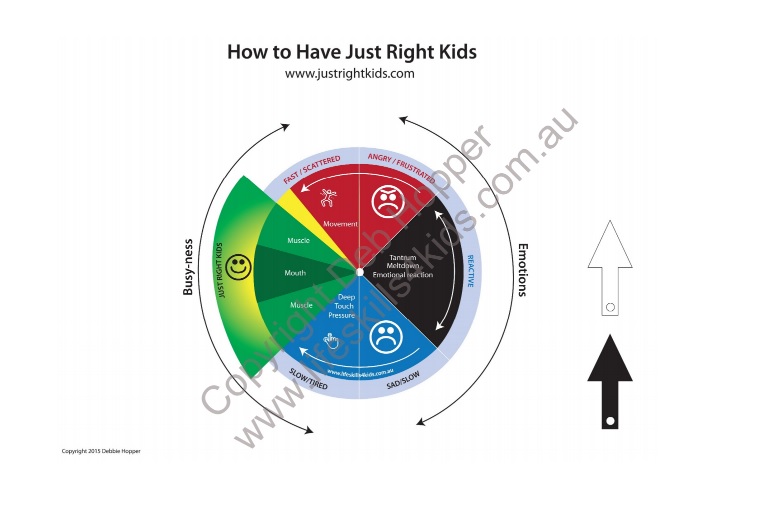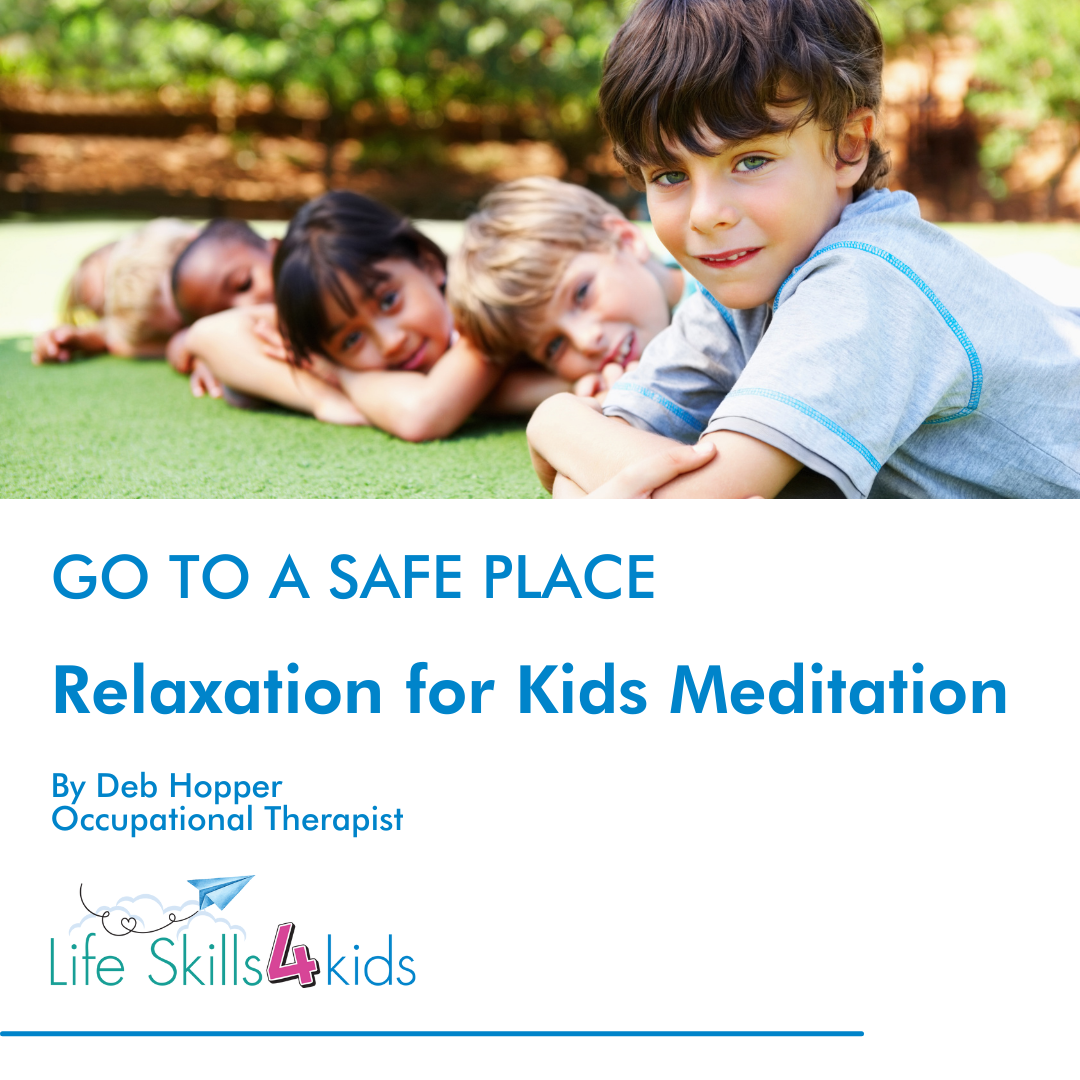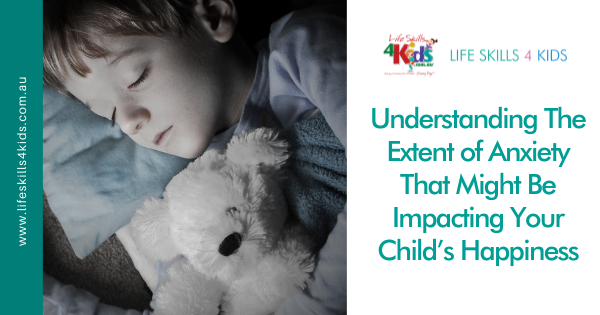How To Recognise Your Child Is Anxious
We all want ‘Just Right Kids’. We want our kids to be well-adjusted, happy, relaxed and enjoying their lives. Kids can find life stressful and this article looks at the extent of anxiety that might be impacting your child’s happiness.
What Is ‘Normal’ Anxiety In Kids?
Fearful and anxious behaviour is common in children – especially as they come across new situations and experiences. Most children learn to cope with different fears and worries.
Everyone experiences anxiety as a response to stress from time to time, even children. Mild anxiety can help a young person cope with a difficult or challenging situation, such as taking an exam, by channeling that anxiety into positive behaviors, e.g., reviewing course material ahead of time in order to prepare for the exam.
To build resilience, we need to challenge children outside of their comfort zone, help them feel success in doing new things and repeat.
It cannot be underestimated though, the extent of anxiety that might be impacting your child’s happiness.
Common Anxieties Seen At Developmental Ages
7 month to toddler – fear of strangers, separation, loud noises, large machines such as vacuum cleaner or lawn mower, animals
Toddler to middle childhood – fear of animals/insects, the dark, separation from parents, supernatural beings eg monsters, thunder/lightning, sleeping alone, ‘bad’ people.
Middle to late childhood – supernatural beings, the dark, bodily injury, heights, getting lost or trapped, burglars, doctors/dentists, death and dying.
Late childhood to early adolescence – fears revolve around social or evaluative situations, eg being teased, rejected by peers, being embarrassed, dating, giving verbal reports, taking tests, fear of dying or physical injury.
Ten Signs That The Extent of Anxiety That Might Be Impacting Your Child’s Happiness Is Becoming A Problem
These are definite signs that the extent of anxiety that might be impacting your child’s happiness is evident.
1. Avoiding new things –
- Even when safe or fun
- Finding it hard to try a new game at preschool or a new sport at school
2. Distressed by normal changes, breaks from routine, or taking risks –
- Finding it hard to take a different route to school or popping to the shops unexpectedly after school
- Creatures of habit
3. Tendency to highlight the negative –
- When worried about something, saying phrases like “it’s going to be an awful day”
- I never get picked for the cricket team
- Glass half empty responses
4. May ask many unnecessary questions and require constant reassurance –
- Mum, what’s happening today?
- Will you be there to pick me up?
- What are we doing tomorrow?
- How will I know that the bus driver will help me carry my instrument on the bus?
5. Physical complaints –
- Sore tummy, feeling sick – I feel sick.
- Feigning temperature – putting thermometer on a hot water bottle or under hot water to make it hotter.
6. Perfectionist –
- Taking excessive time to do homework as they are trying to get correct
- Not wanting to write anything unless they know it’s right
- Not answering in class
7. Difficulty sleeping –
- Taking a long time to get to sleep
- Or waking during night
8. Argumentative (but rarely aggressive)
- If trying to avoid a feared situation
- “What if? Why can’t we?”
9. Very clingy outside of home –
- Your 10 year old comes and hugs you and touches your breasts when you drop him off at school.
10. Avoid unfamiliar situations
General Symptoms
- Easily tired
- Difficulty concentrating or “mind going blank”
- Trouble sleeping, falling asleep, staying asleep
- Restless, on edge, talking fast or in high pitch
- Unexplained pain
- Irritable
- Muscle tension
- Excessive unexplained worry
- Difficulty managing the worry
Seven Categories of Anxiety
1. Learning Anxiety (repeated failure to engage or achieve expected learning objectives)
Think of a time when you made a comment in a class or a work meeting and you were put down or ridiculed.
As an adult we might be annoyed, frustrated, complain to our colleague or partner, but as adults we are quite resilient and we can move on.
Imagine this happening everyday. Think of your child who may have learning difficulties, be clumsy in Gross Motor skills and have messy handwriting. They are trying their best, but they are being frustrated day after day after day.
2. Physical Anxiety (repeated stress caused by physical strain that occurs as a result of inaccessibility)
When children are unwell and in hospital for extended periods, they can become anxious about returning to school and home and wondering what their friends will think. Or, if your child is in a wheelchair, they will struggle to open doors and navigate around the school. This can make them become anxious and withdrawn.
3. Sensory Anxiety (sensory overload that is beyond children’s ability to cope)
Sensory anxiety occurs when the sensory information in the environment is too much and it is beyond a child’s nervous system’s ability to cope. It can put the body’s nervous system in the fight, flight, fright zone, where the brain becomes overwhelmed and all the body can do is to either shut down or react emotionally.
Sensory anxiety can impact on children’s lives significantly, and it is often misunderstood. It can affect any of the Five Senses – auditory, touch, movement, smell, visual.
4. Social Anxiety (repeated failure or lack of opportunity to engage in or achieve a desired level of interaction)
Our kids have to work out how to talk to someone, know what to say, understand jokes from adults or children and learn socially acceptable behaviour as they are growing up. This social interaction can be a minefield for any young person, especially one who may be socially anxious.
For example, there are many steps involved JUST to talk to a friend:
- Choose who to talk to
- Walk over
- Orientate body – face them, not too close, not too far away
- Smile, nod
- Look at them
- Say hello
- Wait for an answer
- Listen
- Keep focussed
- Listen and wait
- Take turns talking
Our young people can struggle with any (or all) of these steps, so it is easy to see how social anxiety can become a big problem for them.
5. Emotional Anxiety (repeated failure or lack of opportunity to express important emotions in a satisfying away)
Deb’s Just Right Kids Model
To help our kids be ‘Just Right Kids’, we have to help them understand how are they are feeling so that they can learn self-regulation of activity levels and of their emotional states.
Once they have learnt the Just Right Kids Techniques, they will be able to work on how to deal with their emotional anxiety and cope with it on a daily basis.

6. Transitional Anxiety (repeated change such that a stable state is never achieved)
This may occur if a child cannot cope with changes to their routine, or there is little or no routine in the child’s life.
There may appear to be a regular routine from an adult’s perspective, but if the child cannot process this information or cannot identify regular changes or the regular flow of tasks that create a routine, then from the child’s perspective, it appears that there is no routine, and life may feel hectic or out of control.
7. Occupational Anxiety (repeated failure/repeated negative experiences which cause overwhelm, anxiety, worry and even trauma)
Occupational Anxiety can include any of the other six categories of anxiety.
It affects the young person’s ability to cope and can often lead to withdrawal from that activity or part of life or general non-participation across many life activities.
- The child’s ability to integrate his/her emotional experience is overwhelmed
- The child may feel emotionally, cognitively, and physically overwhelmed in doing what they need to do from day to day at home, school and in their community
Top 5 Tips To Help Kids With Anxiety
1. Understand what happens in a child’s body when worried or anxious
a. Fight, fright and flight response
b. Teach the child to understand how they feel
c. Teach the child to label and tell you how they feel
2. Support their nervous system
a. Muscle/proprioception (jumping on trampoline, wall pushups)
b. Deep touch pressure eg, massage, pizza game, rough and tumble play
3. Create a mental space
a. Stop, think, breathe
4. Get a plan together
a. Brainstorm with kids
b. Create a checklist – eg know how to go and talk to a friend, what to do, what to say
c. Use visuals to help communicate the plan.
5. Seek professional help
The extent of anxiety that might be impacting your child’s happiness can be far greater than we realise. By having a greater understanding of the breadth of potential causes of anxiety in children, it can help us, as parents, to look out for signs of worry, anxiety or distress in our kids in many more situations.
The Just Right Kids Technique can help our kids cope with all the Categories of Anxiety that we have detailed above.
It enables us to be more alert and more available to encourage, assist and support our kids when necessary.
Relaxation for Kids Meditation Script
With so many uncertainties in the world and with childhood and adulthood anxiety on the increase, it’s my mission to reach out and support as many children and adults who suffer from anxiety as I can. This mindfulness meditation that includes a script and an audio mp3 about finding your safe place is one tool that I share with you.


